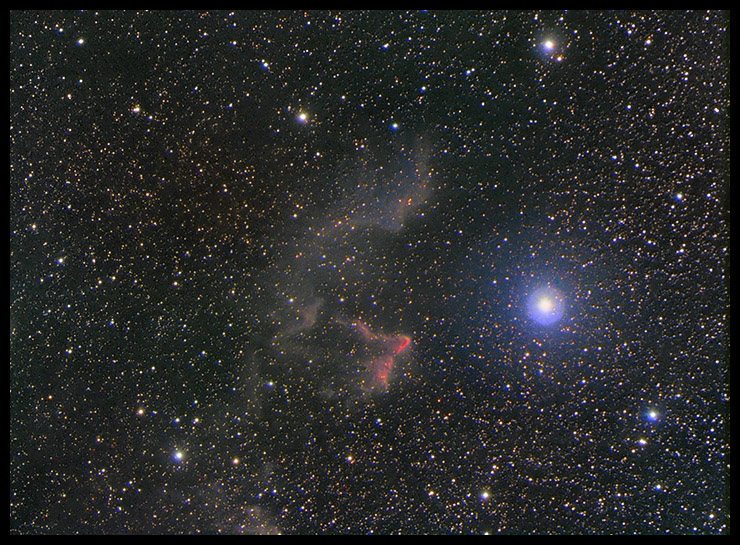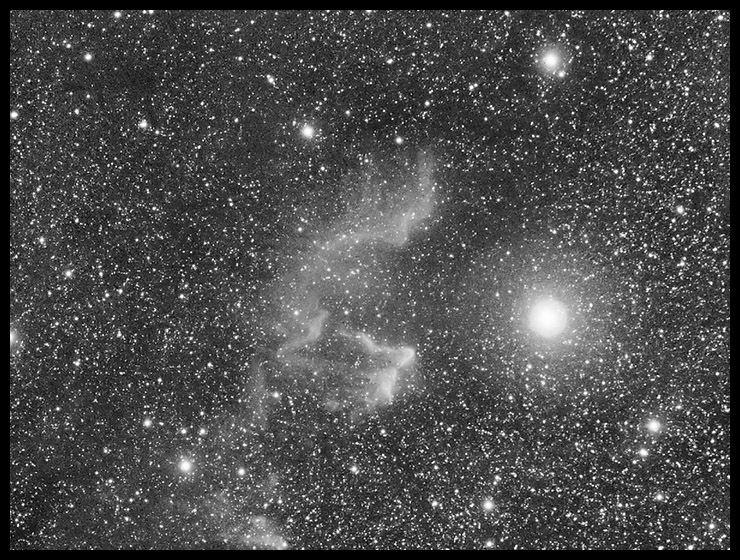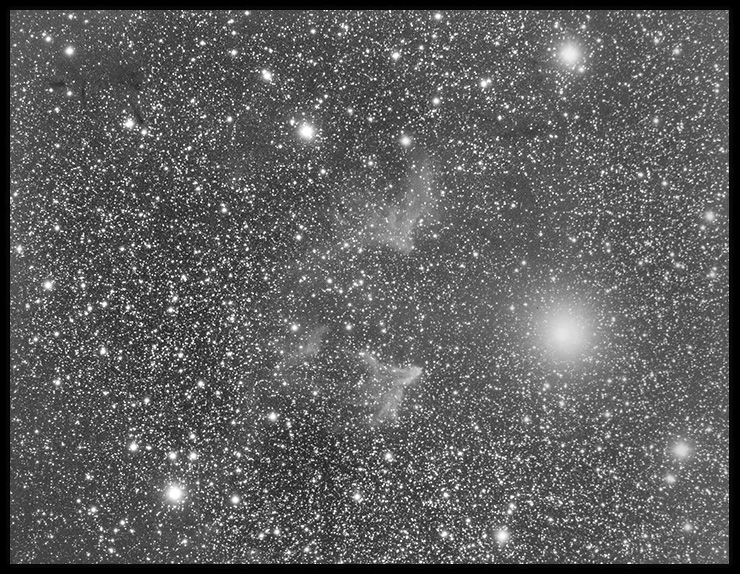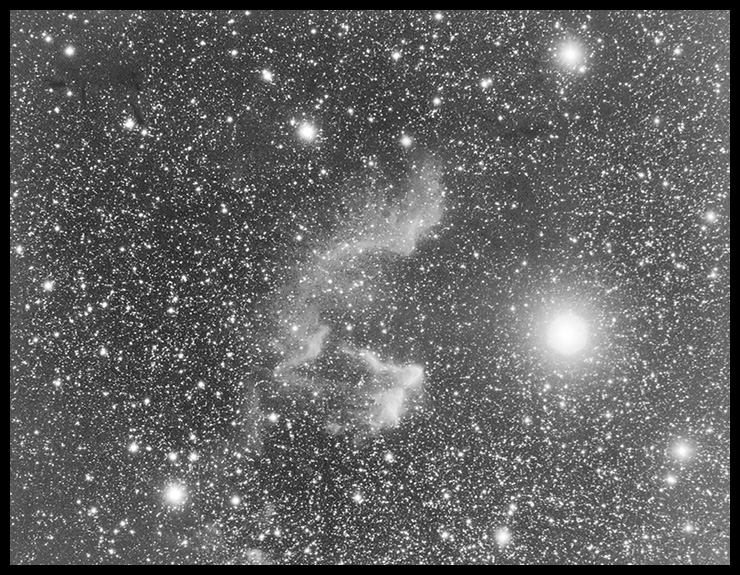The light of a brighter sun
2016/12/21. Gamma Cassiopeia is 3,250x brighter than the Sun. A field of nebulae hang in space not so far away, and the light of the star carves at them. Other bright stars in the "W" of Cassiopeia have names (Caph, Shebir, and Ruchbar), but Gamma does not. The asterism was easy to find for celestial navigation, the middle star particularly so. But how to refer to it? Apollo astronauts took to refering to as "Navi". It might have been short for "navigation" or "navigational aid," but it's also Gus Ivan Grissom's middle name backwards. For details of Navi (and Regor and Dnoces) see the Apollo Surface Journal.
I pointed a 92mm refractor toward Gamma Cas last night. I took thirty, five minute frames in white light which play no part in the next two images. I also took nine, fifteen minute frames in the light of hydrogen-alpha, and three, five minute exposures in each of red, green, and blue light.
Here you go. I'll play some more with the white-light data by and by, but for the moment, I think I'd've been better off just shooting h-a for luminance all night long and maybe a few more RGB frames.

TMB 92SS @ F4.4, ST2000XM ccd
IC 63 & IC 59 with Gamma Cassiopeia ("Navi")
9x900s Ha + 3x300s RGB (3h00m)

IC 63 & IC 59 with Gamma Cassiopeia ("Navi")
9x300s H-a (2h15m)
There's a prominent dark nebula in the upper left that may show up better in the luminance data. All in all, it's a tough field. The bright bits of the nebulae come up very quickly, but the fainter parts are much fainter than one might think. The field calls for a lot more exposure than this or else an ingenious method of recovering the left-side of the histogram.
Here's an image built from all the luminance data, with the transfer function modified to show detail in the dark nebulae in the field, especially the intricately structured example in the upper left:

IC 63 & IC 59 with Gamma Cassiopeia ("Navi")
30x300s Luminance (2h30m)
And the best of both H-a and luminance:

IC 63 & IC 59 with Gamma Cassiopeia ("Navi")
30x300s Luminance with 9x900s Ha (4h45m)
I've shot this field before using the 10-inch R-C and the 5-inch A-P. Aperture counts! And so does practice.
My deep-sky photos are made with a variety of sensors and optics. Deepest images usually come from a SBIG ST2000XM CCD behind a 10-inch Astro-Tech Ritchey-Chretien carried on an Astro-Physics Mach1GTO. The CCD is equipped with a CFW-10 loaded with Baader wide- and narrow-band filters. Camera control and guiding are handled by Maxim DL 5.12. A Canon 6D and a modded 50D find themselves mounted behind an Orion 10" F4 Newtonian or a 92mm Thomas Back refractor or a tiny but mighty AT65EDQ refractor, sometimes with Backyard EOS in control and PHD Guide keeping things on target. Really widefield photos are often made using the 6D and various camera lenses and an iOptron Skytracker mount. PixInsight does most of the heavy lifting in post-processing — alignment, stacking, gradient removal, noise-reduction, transfer function modification, color calibration, and deconvolution. Photoshop along with Focus Magic and a handful of other plugins get their licks in, too, especially when polishing for the web.
:: top ::